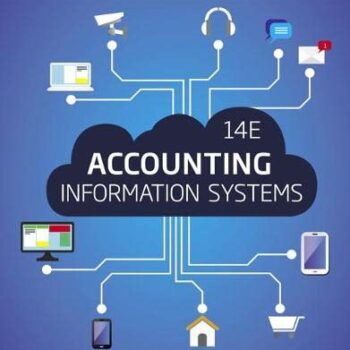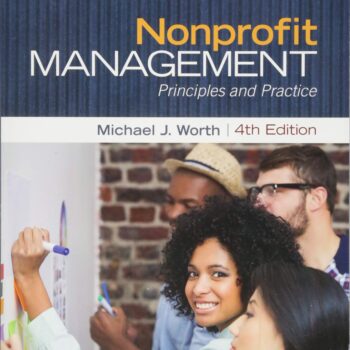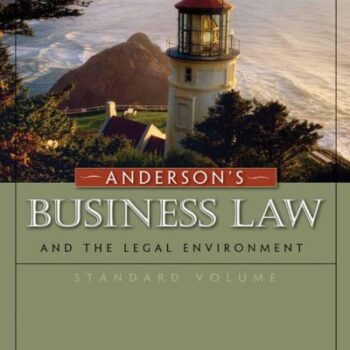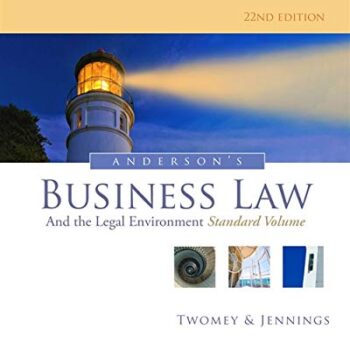
Test Bank For Personal Financial Planning 13th Edition by Lawrence J. Gitman
Original price was: $55.00.$25.00Current price is: $25.00.
Digital item No Waiting Time Instant DownloadISBN-13: 978-1111971632 ISBN-10: 1111971633
For students wanting to do better in the field of personal financial planning, the Test Bank for Personal Financial Planning 13th Edition By Lawrence J. Gitman is an important and useful resource. It aims to provide insight into the major aspects of financial management: planning for future goals, administering current resources, investing for return, and making retirement provisions. Further, test banks are useful as practice questions that give the user opportunities to check up on their understanding of various concepts such as making budgets, managing debt, and how to get insurance.
Key Topics Covered in the Test Bank
Areas covered in the Test Bank include essential components of finance which one needs to master to be financially literate. Below are some of the main areas you’ll explore in the course:
- Financial goals: Gain the skills of how to develop a clear and objective look into their future and design corresponding goals.
- Personal budgeting: Also, be able to devise and follow a workable personal budget.
- Investments: Learn what options exist in the investment market and their roles in wealth creation.
- Credit and debt: How to manage debt and credit use.
- Insurance: What kind of insurance exists and how do they safeguard the financial well-being of the individual?
- Retirement planning: What retirement plans are available and how to go about implementing them?
Why Choose This Test Bank?
This time, self-evaluation tools are available thanks to the Test Bank. You use it to pinpoint areas of weakness that require attention and reinforce the understanding of concepts that are pertinent to achieving financial success. The questions in the Test Bank are structured within the context of examinations related to the subject area which makes it simple to revise for those tests.
If you want to pass tests or simply learn how to create appropriate financial plans, this Test Bank provides essential assistance to the students looking to study the material in the 13th Edition of Lawrence J. Gitman’s work.
Employing Current Financial Tools and Technologies
A unique highlight of the 13th Edition is the emphasis on recent financial instruments. The Test Bank has a sample question on the implementation of effective personal financial planning through financial software and other related technologies. This means that you are oriented with contemporary developments in financial planning which prepares you for examinations and practical situations.
Summary
Learning concepts of personal finance becomes easier with the Test Bank For Personal Financial Planning 13th Edition by Lawrence J. Gitman. Its broad coverage of the most important topics such as investments, budget management, and retirement enables the user to make sound financial decisions and even plan towards those decisions. This Test Bank can further your understanding and boost your confidence in financial planning as you practice with it.
Test Bank For Personal Financial Planning 13th Edition by Lawrence J. Gitman
Chapter 2—Using Financial Statements and Budgets
TRUE/FALSE
1. A balance sheet shows your financial condition as of the time the statement is prepared.
ANS: T PTS: 1 DIF: Moderate OBJ: LO: 2-1
NAT: BUSPROG: Analytic skills STA: DISC: Financial Analysis and Cash Flows
KEY: Bloom’s: Knowledge
2. One could use statements from various financial institutions to help complete a balance sheet.
ANS: T PTS: 1 DIF: Moderate OBJ: LO: 2-1
NAT: BUSPROG: Analytic skills STA: DISC: Financial Analysis and Cash Flows
KEY: Bloom’s: Knowledge
3. The income statement includes information on your latest paycheck.
ANS: F PTS: 1 DIF: Challenging OBJ: LO: 2-1
NAT: BUSPROG: Analytic skills STA: DISC: Financial Analysis and Cash Flows
KEY: Bloom’s: Analysis
4. The income and expenditures statement provides a measure of financial performance over some time.
ANS: T PTS: 1 DIF: Moderate OBJ: LO: 2-1
NAT: BUSPROG: Analytic skills STA: DISC: Financial Analysis and Cash Flows
KEY: Bloom’s: Knowledge
5. Financial planning is necessary only if you earn a lot of money.
ANS: F PTS: 1 DIF: Easy OBJ: LO: 2-1
NAT: BUSPROG: Analytic skills STA: DISC: Financial Analysis and Cash Flows
KEY: Bloom’s: Comprehension
6. Assets listed on your balance sheet must have monetary value.
ANS: T PTS: 1 DIF: Moderate OBJ: LO: 2-1
NAT: BUSPROG: Analytic skills STA: DISC: Financial Analysis and Cash Flows
KEY: Bloom’s: Comprehension
7. A budget is a detailed statement of what income and expenses occurred over a past period.
ANS: F PTS: 1 DIF: Moderate OBJ: LO: 2-1
NAT: BUSPROG: Analytic skills STA: DISC: Financial Analysis and Cash Flows
KEY: Bloom’s: Comprehension
8. A budget is a detailed financial forecast.
ANS: T PTS: 1 DIF: Moderate OBJ: LO: 2-1
NAT: BUSPROG: Analytic skills STA: DISC: Financial Analysis and Cash Flows
KEY: Bloom’s: Comprehension
9. Financial assets are intangible assets acquired to achieve long-term personal financial goals.
ANS: T PTS: 1 DIF: Moderate OBJ: LO: 2-2
NAT: BUSPROG: Analytic skills STA: DISC: Financial Analysis and Cash Flows
KEY: Bloom’s: Knowledge
10. Assets purchased on credit should be included on the asset side of the balance sheet.
ANS: T PTS: 1 DIF: Moderate OBJ: LO: 2-2
NAT: BUSPROG: Analytic skills STA: DISC: Financial Analysis and Cash Flows
KEY: Bloom’s: Comprehension






